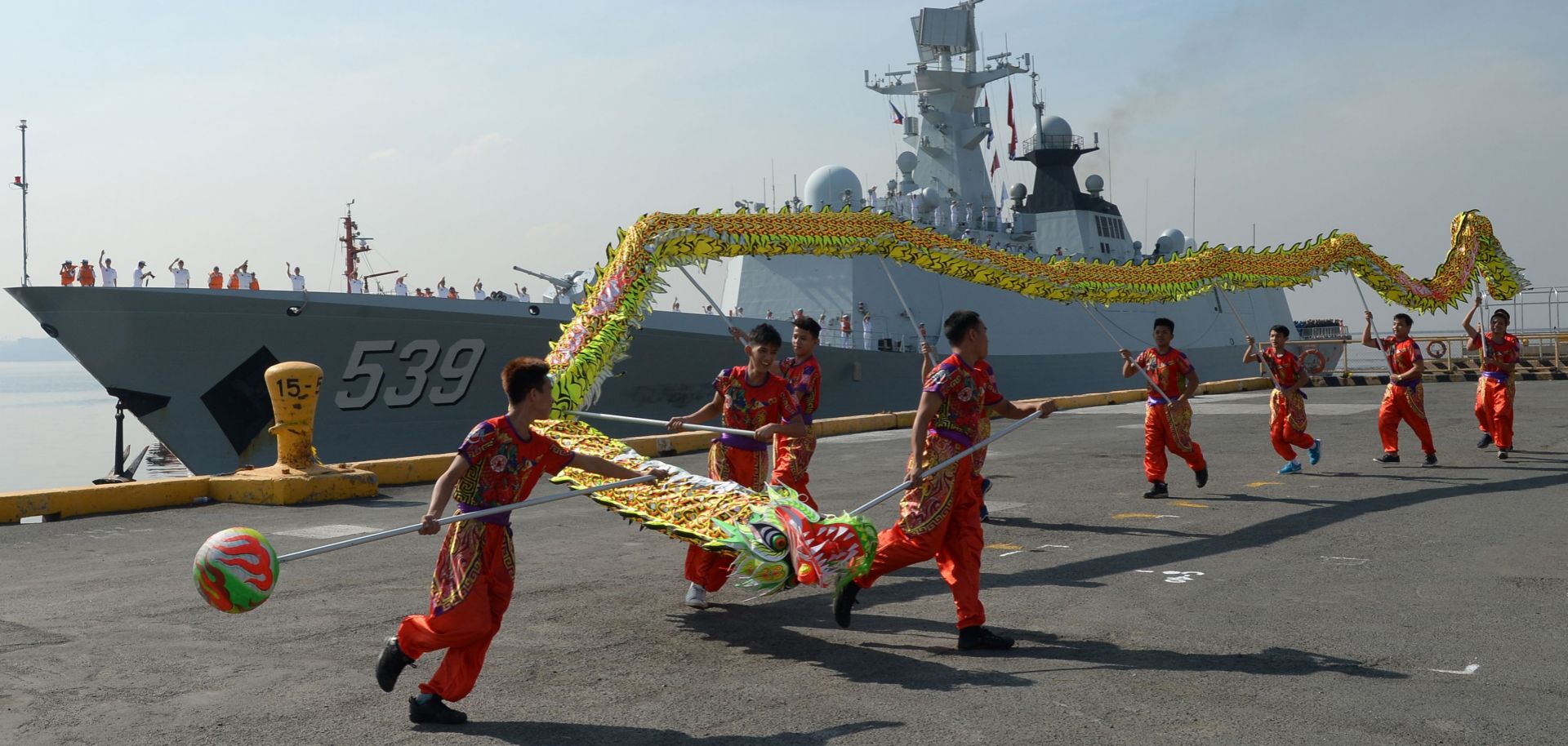COLUMNS
In China's Backyard, Charting the Course of Most Advantage

Mar 7, 2019 | 10:00 GMT

Dragon dancers perform as the Chinese guided-missile frigate Wuhu prepares to dock at the international port in Manila, Philippines, on Jan. 17 on a goodwill visit along with three other Chinese naval ships.
(TED ALJIBE/AFP/Getty Images)
Highlights
- In the mounting great power competition between the United States and China, both countries will strive to build influence among the smaller powers of Southeast Asia.
- Southeast Asian nations, however, will not fall into neat Chinese or U.S. spheres, instead playing the middle to gain advantages from both.
- This fits the strategy many pursued during the Cold War and, in the new great power arena, they will find it easier to preserve greater autonomy.
Subscribe Now
SubscribeAlready have an account?
